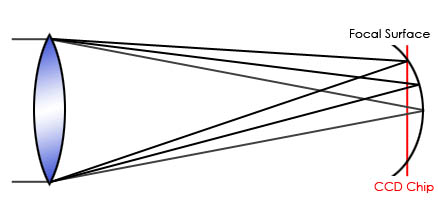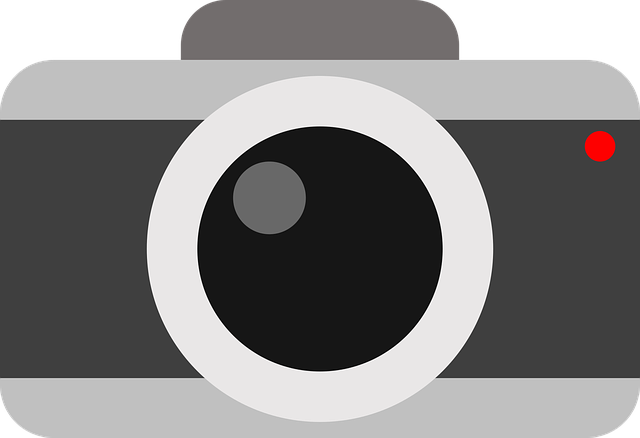*This post may contain affiliate links. This means we may make a commission if you purchase an item using one of our links*
Flat field eyepieces are designed to assist telescopes, primarily fast telescopes with focal ratios around f/4 or f/5, correct the curvature of the image that would be seen. In essence they make the visuals flatter and more pleasing for the user.
That’s just the basic intended reason for flat field eyepieces. Of course I will be going into a little more depth about them throughout this article so you have more thorough understanding of when they should be used and when they’re probably not worth using.
How Do Flat Field Eyepieces Work?
Table of Contents
Flat field eyepieces, as I’ve mentioned already, attempt to flatten the curves on the image that fast telescopes tend to display. In essence flat field based eyepieces are designed to increase the focus of the optics within your device.
However, in reality the flat field moniker is more a marketing ploy over anything else so, you should always be careful when someone suggests you look into one before buying them.
With that being said there obviously are genuinely good flat field eyepieces out there, provided you do enough research before putting the cash down.
The Flattening Process
To understand how a flat field eyepiece works, I’ll go over a few elements regarding how curvature works and how the flattening process (per say) of the curvature works in real world use.
First of all you should know that the field curvature of an image is determined by the radius of the curvature of a focal surface.
In theory an instrument with a low radius will have a larger curvature over equipment with a radius that is much higher.
In regards to how this curvature is shown within telescopes, quite a large number of optical variations such as Newtonian reflectors, Schmidt-Cassegrain, Refractor, Ritchey-Chretien among other common cassegrain telescope will have field curvature to some degree.
Generally speaking, devices with lower focal ratios will have more field curvature. In fact it’s the focal length of a telescope that is directly related to the curvature of the field that you’ll see.
There can be many more complexities to the field curvature of a telescope depending on the type of optics used, this is called astigmatism, so it isn’t always the case that focal length is directly related to curvature.
However, considering the difficulty of creating optics that are completely flat, it does mean most refractor or cassegrain telescopes will have field curvature but, they also tend to come with field flattners to minimise the curves.

Furthermore, the lack of flatter surface, particularly for photography will result in off axis focusing (as can be seen on the image above) that will inevitably result in specific elements of an image, particularly smaller stars, not focusing and looking quite blurry.
What Are The Benefits Of Flat Field Eyepieces?
The biggest benefit of flat field eyepieces, have to do with their ability to flatten the huge curved views that lower focal ratio devices tend to have.
They can also be used to assist folks who don’t have the greatest of vision to essentially help focus the visuals through the eyepiece as opposed to a curved and ultimately more fuzzy view.

A flatter field of view is also an element that is very much desired for astrophotography purposes as opposed to just visual so, for anyone who’s aim is to take great images of outer space, a flat field eyepiece will probably be needed.
This is down to digital and CCD cameras using a flat plane to take photos so, if a telescopes visuals are way too curved the images you’ll see through the lens wouldn’t be great therefore, using a flat field eyepiece or field flattener would be necessary.
When Are Flat Field Eyepieces Not Worth Using?
If you’re purely after a more visual experience and don’t mind dealing with a curved field of view, it definitely wouldn’t be necessary in that regard.
Higher focal ratio telescopes (an 8″ f/8 telescope for example) tend to have less curvature than a 8″ f/4 telescope.
Of course there will be some curved elements to most telescopes as creating a fully flat lens is very expensive to do but, if your device does have a higher focal ratio, chances are that the curvature present isn’t too bad so flat field eyepieces wouldn’t be necessary.
How Are They Different From Normal Eyepieces?
Although in theory flat field eyepieces are different to normal eyepiece and certainly don’t add to the curvature as some other types of eyepieces would, in reality they aren’t all that different from normal eyepiece so you’d be better getting them instead (here’s a list of our top picks) .
As I mentioned earlier the flat field name is more or a less a marketing ploy used by merchants to try and sell more products but, in reality a flat field eyepiece may either be a very slight flat correction or in a lot of cases they may just be rebranded eyepieces from manufacturers whilst being given a different paint job to move units.
Of course I’m not saying there aren’t competent flat field eyepieces out there but, I’m also saying that the reasons for getting one is generally miniscule as it’ll only improve the sharpness of the visuals ever so slightly for most folks.
Individuals with older or weaker eyes would benefit from a flatter more focused surface but, other than that, they may be more expensive but the quality, in regards to contrast or clarity, may not be as good as you would think.
Summary
Flat field eyepieces can definitely be beneficial for some and will certainly reduce field curvature to some degree whilst possibly improving the sharpness of an image.
However, I would say you’re better of getting a field flattner to reduce curvature whilst investing in one of your typical eyepieces because in reality most flat field eyepieces aren’t worth the hype they’re given.

